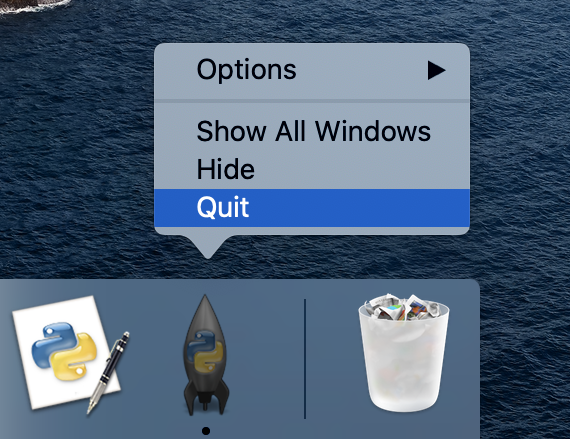

#Emacs for mac python windows
I'm using it on Ubuntu, but a quick test indicates this works on Windows also. No more constant Alt-Tab to switch between emacs and the command prompt. I'm loving this! No more directing my program output into a file when I'm printing tons of debug messages. It notices the File lines in the trace back and sets them up so I can click on a filename to visit the file and line associated with the traceback. Pre-configured for Julia and python programming - supports both REPL and notebook based workflows. emacs parses the buffer looking for error messages. Provides a solid, ootb workflow for task and project management. If my program raises an exception, I get a traceback in the emacs buffer. Now I can edit and type Ctrl-C Ctrl-C to run. This binds Ctrl-C Ctrl-C to compile instead of the usual eval-buffer which I never use anyway. The setq makes the compilation buffer scroll to follow the output.Īnd then in my python-mode hook function I added: This function invokes compile with python foo.py when I'm editing a buffer named foo.py. The command runs in a separate process and its output is directed to an emacs buffer.

The compile command in emacs is intended for running make and other command-line build tools. It occurred to me that if I my program doesn't need input (almost all mine have a GUI) I can run them using the emacs compile command. As a result, I always edit in emacs and then switch to a command prompt to run. The rest is written in Emacs Lisp that’s what you’re likely to interface with directly as a user and developer and is more than a million. The core is several hundred thousand lines of C code. Also, emacs seems to be hung waiting on the python subprocess while my GUI app is running. Emacs is a tiny C core that forms the foundation of how it interacts with your operating system. Attempting to reuse them in the same process is, in my experience, a recipe for confusion. I really like this idea but have never been able to reliably use it because so much of my work depends on external libraries that may not do a complete job of cleaning up their state.
#Emacs for mac python install
Emacs python mode supports running scripts in an inferior python process that is running in an emacs buffer. python-version of the current directory is a virtualenv, Pyenv will automatically activate it for you and any command you execute such as pip install X would affect that virtualenv.


 0 kommentar(er)
0 kommentar(er)
